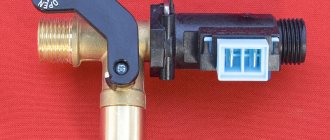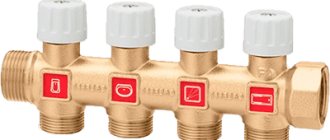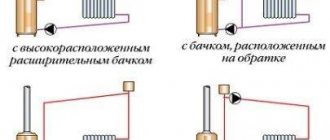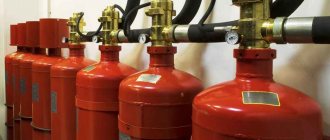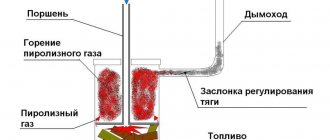Every home owner cannot imagine living without individual heating.
The ability to combine heating and water heating in one device is an optimal condition.
There are a large number of devices with high consumer qualities on the market.
One of the iconic examples of heating equipment is the Baxi Main 24 Fi double-circuit gas boiler, whose technical capabilities have been tested for Russian weather conditions.
A more detailed study of this device, highly appreciated by the consumer.
Description
For a long time, the leading Italian company Baxi, part of the BDR Thermea Group, has been producing heating equipment.
During its existence, a lot of technological research has been carried out, which contributed to the production of high-segment products that meet the standards and requirements for this product in Europe.
The double-circuit wall-mounted boiler Baxi Main 24 Fi is one of the models that provides for the use of natural or liquefied gas as fuel.
More than 50% of the company's products are exported; in this regard, operating conditions are taken into account. The equipment is specially prepared for operation in Russia.
Baxi products are not afraid of gas pressure changes and power surges, which is why they enjoy high purchasing power and preference when choosing Russian consumers.
Peculiarities
In the double-circuit boiler Baxi Main 24 Fi, the number 24 is an indicator of the boiler power (24 kW), which is enough for the uninterrupted supply of hot water for the operation of heating systems or the operation of a heated floor, and the letters Fi indicate the turbocharged mode in the combustion chamber.
The design of the combustion chamber is closed, which ensures tightness and cleanliness of the surrounding air.
In the design of the Baxi Main 24 Fi, two separate heat exchangers were combined into one, unlike other versions.
The design is a pipe within a pipe, made in the shape of a rhombus. Due to the design feature, where the coolant passes through the outside and hot water through the inside, the boiler has acquired convenient adjustment and tuning, and has also become more compact.
Model features
Baxi ECO Four 24 F is a double-circuit boiler with a closed combustion chamber and has two independent heat exchangers, so the load in the heating system does not drop during hot water supply.
The unit is equipped with a modern liquid crystal display, which visualizes the entire process of managing heat and power processes, recording operating parameters for temperature and pressure of the coolant and other controlled parameters.
The unit is equipped with a full set of auxiliary equipment: primary sensors of the heat supply system, a circulation pump, a centrifugal fan and an expansion tank with a pressure of 0.8 bar and a volume of 6 liters. The Baksi Eco For 24 boiler has connections for connecting a coaxial chimney with a diameter of 60-100 mm.
Boiler technical characteristics
According to the source https://myaquahouse.ru, all models of Baxi boilers have almost the same functionality. All parameters of the Baxi Main 24 Fi boiler are presented below:
- Characteristics Meaning
- Power 24 kW
- Heated area 240 m2
- Dimensions 734:400:317 mm
- Weight 33.5 kg
- Power consumption 10.6 kW
- Efficiency 90.3%
- Gas consumption 2.78 m3/h
- Exhaust temperature 35-80С
- DHW temperature 35-55С
- Allowable pressure 19.1 bar
- Chimney Coaxial 60/100 mm
- Power supply 230 V, 50 Hz
teplomex.ru
The mounted double-circuit gas heating boiler Baxi Eco Four 24 F , which we will review today, is one of the highest quality in the range of wall-mounted water heating units from this Italian manufacturer.
In order to verify this in more detail, we need to compare the technical characteristics of the Baxi EcoFor 24 F and prices, study the model’s operating instructions (passport), reviews from owners and specialists. In addition, we will pay attention not only to the advantages of the boiler, but also to its disadvantages, analyzing its main breakdowns, malfunctions and errors, as well as ways to eliminate them.
Baxi Eco Four boiler: operating instructions, features
The “Baxi Eco Four” series of gas boilers is a reliable wall-mounted gas heating device of the fourth generation in the “family” of Baxi brand boilers. The boiler of this series is distinguished by good build quality and the components and spare parts used. We look at the photo of the Baxi Eco Four 24F gas boiler.
Boiler Baxi Eco Four 24 F
The Italian company markets several modifications of Baxi Eco Four boilers: double-circuit and single-circuit, with an open and closed combustion chamber.
In addition to all this, today the devices are produced in two types of power: 24 kW and 14 kW. Let's see what models the manufacturer offers us. 1. Double-circuit gas boilers (heating and hot water):
— Eco Four 24F; — Eco Four 24.
2. Single-circuit gas boilers (for heating only):
— Eco Four 1.24F; — Eco Four 1.24; — Eco Four 1.14F; — Eco Four 1.14.
The number in the abbreviation indicates the power of the device in kW, and the letter “F” means that the boiler is turbocharged, with a closed combustion chamber.
Baxi Eco Four 24F: installation of a double-circuit gas boiler
The most popular, judging by the reviews of owners and specialists, is the Baxi Eco Four 24 F model. This is a two-circuit mounted forced draft heating device with a power of 24 kW, capable of heating a private house with an area of up to 200-220 m2. It consists of several main elements characteristic of a modern wall-mounted gas boiler:
— two heat exchangers (copper for heating, stainless steel for hot water supply); — Grundfos two-speed circulation pump with automatic air vent; — Italian gas valve SIT 845; — Polidoro gas burner with stainless tips; — Honeywell electronic board; — brass three-way valve with electric servo drive; — expansion membrane tank with a volume of 6 liters.
As we can see, all the main elements of the Baksi Eco For 24 F gas boiler are produced by well-known companies, world leaders in their industry. In addition, all internal parts are made of brass: hydraulic group, supply pipes and gas part. The boilers are adapted to Russian frosts and are able to function even at very low gas pressure.
Design and principle of operation of the Baxi Eco Four boiler
The gas burner of the boiler has stainless steel nozzles and smooth flame modulation with smooth electronic ignition, as on all budget units from this manufacturer.
A specially developed system for automatically regulating air supply to the device is protected by a patent. Functions, control and safety
As with all models of fourth-generation Baksi boilers, on the front side of the wall-mounted unit “Eco Four 24 F” there is a control panel with an LCD display, which displays and sets settings and parameters, temperature in the heating circuit and DHW. In addition, error codes appear on it when malfunctions or malfunctions occur during the operation of the boiler.
The heating circuit of the Baxi Eco Four boiler can operate in two modes:
- traditional (30-85 °C); — warm floor (30-45 °C).
Like the boilers of the “Main Four” series, all “Baxi Eco Four” devices incorporate weather-dependent automation that helps the boiler operate depending on the temperature outside the window. All you need to do is buy an outdoor temperature sensor, install and connect it to the boiler.
Buying and connecting a room thermostat will also help save money, because the operation of the boiler, in this case, will depend on the set air temperature in the house or apartment.
Baxi Eco Four boiler control panel
“Baxi Eco Four 24 F” boilers are equipped with modern safety elements: a pneumatic relay (draft sensor) is activated when there is insufficient draft in the chimney, when the pressure in the heating system is low, a special pressure switch is activated, and when there is excess pressure, a 3 bar safety valve .
There are flame control sensors, temperature sensors on the heating circuit and running water, and a pressure gauge. The energy-saving circulation pump "Grundfos UP 15-50" automatically turns on once a day to prevent the three-way valve from blocking or jamming. This function is very useful when the heating device is idle for a long time and not used.
Also, the boilers of this series are equipped with a modern self-diagnosis system: the device itself periodically tests the operation and reports any problems on the LCD display. It is also possible to connect to bottled gas by first changing the gas injectors for liquefied gas.
Baxi Eco Four 24 F: technical characteristics of a gas boiler
The smoke removal system of the Eco For boiler is designed for a coaxial pipe with a diameter of 60/100 mm. When purchasing an adapter for separating chimney channels, it is possible to install aluminum pipes with a diameter of 80 mm. An atmospheric boiler with an open combustion chamber does not have a fan, and the diameter of its chimney pipe is 120 mm.
Heating and gas are connected to fittings with a thread diameter of 3/4′, the DHW circuit is 1/2′. The device has compact dimensions of 730/400/299 mm. The productivity of the boiler's hot water supply circuit is about 14 l/min, which is quite enough for the simultaneous operation of two water supply points: the kitchen and the bathroom. These and other technical characteristics are described in the table.
Baxi Eco Four 24F: technical characteristics of the boiler
Errors in the gas boiler Baxi Eco Four
E01 - the burner does not ignite. E02 - overheat protection sensor is triggered. E03 - traction pressure switch is faulty. E05 - the temperature sensor of the heating system circuit has tripped. E06 - malfunction of the temperature sensor of the DHW circuit. E10 - insufficient pressure in the heating system. E25/26 - there is no circulation in the heating system due to the pump being blocked. E35 - false flame. E96 - insufficient voltage in the electrical network.
Advantages of the Baxi Eco Four 24F gas boiler:
— European assembly; — two heat exchangers; — good quality of components and main components; — modern security system; — the ability to connect a room thermostat and an outdoor temperature sensor; — a network of service centers throughout the country.
Disadvantages of the Baxi Eco Four 24 F gas boiler:
— high price from 37,000 rubles; — expensive spare parts; — small volume of expansion tank 6 liters; — the electronic board is sensitive to power surges.
Today we left a review on the popular double-circuit wall-mounted heating boiler model - Baxi Eco Four 24 F, technical characteristics, device according to operating instructions. Reviews from owners and specialists are quite contradictory, but the undoubted advantage of the EcoFor series devices is the presence in them of two separate heat exchangers, a brass hydraulic group and a Grundfos brand pump. Let's watch the video.
Advantages and disadvantages
Advantages of the wall-mounted double-circuit boiler Baxi Main 24 Fi:
- European build quality that meets all requirements and standards.
- Environmental indicators.
- Small dimensions, attractive appearance.
- Minimum gas consumption.
- Possibility of heating a large area.
The disadvantages include:
- Due to the design, flushing the bithermic heat exchanger. difficult to implement.
- Expensive components.
- There is no protection against power surges.
- Repairs and maintenance must be carried out by a specialist.
Important! The advantages and disadvantages of the Baxi Main 24 Fi boiler are inherent in the design features and relate to the general qualities of the boilers.
Installation of a gas double-circuit boiler Baxi Main 24 Fi
Main elements of the boiler design:
- Combined bithermal heat exchanger.
- Closed type gas burner.
- Expansion tank.
- Turbocharger fan.
- Circulation pump.
- Three-way valve.
- Control board with connected sensors.
- Connecting pipes, connecting pipelines.
The boiler's operating technology consists of heating the coolant using a gas burner in a heat exchanger, where the exiting heating agent is mixed with the cold return flow at specified temperatures.
At the same time, water is heated in the heat exchanger, circulating through the inner tube and converting energy from the hot heating agent.
Due to the fan absorbing clean air from the external pipe of the coaxial chimney, the combustion process occurs and the products of fuel combustion are removed.
All processes are controlled by a complex of sensors, from which, in the event of a malfunction, a signal is received and an error code is displayed on the display. The entire cycle takes place automatically with manual adjustment of the operating mode.
Setting up and adjusting the power of the gas boiler BAXI main four, main 5
Gas wall-mounted double-circuit boiler BAXI main 5 / main four with bithermic heat exchanger.
Device diagram. 1 - hot water temperature sensor; 2 - automatic bypass; 3 - hydraulic pressure switch; 4 - gas valve; 5 — gas train with nozzles; 6 — safety thermostat; 7 - primary heat exchanger; 8 — heating temperature sensor; 9 — exhaust hood; 10 - fan; 11 — exhaust gas temperature sensor; 12 - ignition electrode - flame ionization; 13 - burner; 14 — expansion tank; 15 — pump with air separator; 16 — pressure gauge; 17 - valve for draining water from the boiler; 18 — DHW priority sensor; 19 — valve for filling the boiler with water; 20 - DHW circuit filter; 21 - safety valve; A - water supply to the heating system; B - output of hot domestic water; C—gas inlet; D - cold water inlet from the water supply; E - return of water from the heating system.
Why regulate the power of a gas boiler?
Building regulations do not recommend installing boilers with a useful power that significantly exceeds the power of the heating system in a house or apartment.
The large difference between the power of a gas boiler and the power of heating devices, among other disadvantages, leads to cyclical operation of the boiler.
Excessive cyclicality, impulsiveness of work, or, as people say, “boiler clocking” is manifested in the fact that the boiler burner, after being turned on, quickly heats the water in the heat exchanger to the maximum temperature. The boiler turns off when the set temperature is reached in the straight pipe at the boiler outlet. But the radiators remain not heated to this set temperature - the water heated in the boiler simply does not have time to reach the heating devices. That is, the boiler produces more thermal energy per unit time than a less powerful heating circuit is capable of receiving . Therefore, the temperature of the water leaving the boiler rises quickly and it turns off earlier, without having time to heat the radiators.
After a short time, the circulation pump supplies the heat exchanger with the remaining cool water from the heating system return pipe and the burner turns on again. Then everything repeats again.
A high-power heating system has an increased pipe diameter and radiator volume, which means less hydraulic resistance. In larger systems, water does not flow exactly the same, it flows faster, at a higher flow rate (liters per second). During its rapid passage through the boiler heat exchanger, each liter of water only manages to heat up by 15-20 °C. And in order to heat this liter to a given temperature, the water in the heating system must pass through the heat exchanger several times.
Low-power heating systems have thinner pipes, smaller radiators, higher hydraulic resistance and water flows slower. If you heat slowly flowing water with the same power, then the water that enters the heat exchanger immediately, at one time, will heat up by 40-60 °C, immediately to the maximum temperature, and the boiler will turn off. And the water remaining in the system, which has not reached the boiler, will remain cold until the next clock cycle. This is what happens in the boiler if its power is not adapted to the heating system.
The size of the flame (burner power) in the boiler is controlled electronically using a complex algorithm, which takes into account the time from the start of the burner, the temperature value, the rate of temperature change in the heating circuit, and the temperature difference in the forward and return pipes. I don’t know all the intricacies of the regulation algorithm. But automation, without additional service settings, does not ensure normal operation of the boiler.
Clocking reduces the service life of the boiler and increases gas consumption
Any person, even without being a mechanic or electrician, knows that the most difficult operating mode for equipment is the moment of startup, turning on mechanical and electrical equipment. During the start-up period, the greatest wear is observed, and failures most often occur. An increase in the number of starts as a result of cyclicity consumes the operating life of very expensive parts of the boiler the most - gas and three-way valves, circulation pump, exhaust gas fan.
To ignite at the moment of starting, the maximum amount of gas is supplied to the burner. Part of the gas, before the flame appears, literally flies into the pipe. Constantly “re-igniting” the burner further increases gas consumption and reduces the efficiency of the boiler.
Some cyclical operation of a gas boiler is provided for by its normal operating mode. For example, regulating the temperature in a room without a thermostat or using a two-position thermostat occurs by periodically turning the boiler burner on and off.
The task of regulating the boiler power is to eliminate excessive cycling - clocking caused by the lack of adaptation of the boiler settings to the heating system.
By the way, about other disadvantages of an overly powerful boiler. The service instructions for the Baxi boiler indicate its efficiency in heating mode: 93.2% at maximum thermal power (24 kW) and 79.4% when operating at minimum power (9.3 kW). Imagine how the efficiency will further decrease if this boiler will have to work with a 4 kW heating system. Please note that a double-circuit boiler operates in heating mode most of the time throughout the year, with minimal power. At least 1/4 of the gas spent on heating will literally fly uselessly down the chimney. This will be the price to pay for installing overly powerful heating and hot water equipment in the house.
To eliminate boiler clocking, it is necessary to equalize the power of the boiler and the heating circuit
How to determine the maximum thermal power of a heating circuit in a house or apartment
How to determine the maximum thermal output of a heating circuit? On the websites of radiator manufacturers and sellers we find the thermal power of each radiator installed in the house. In manufacturers' catalogs, the heat transfer of radiators is presented in 2 modes: 1) 90/70/20 degrees and 2) 75/65/20. You need to look at the heat transfer according to the “75-65/20” parameter. The sum of the powers of all radiators connected to the boiler will be equal to the maximum thermal power of the heating circuit.
Very roughly, the maximum power of the heating system of a house or apartment can also be determined based on the ratio of 1 kW for every 10 m2 of heated area. For example, for a house or apartment with a heated area of 100 m2, the maximum thermal power of the heating circuit will be less than 10 kW.
Wall-mounted double-circuit gas boiler Baxi with a maximum useful thermal power of 24 kW. comes on sale with a factory-set maximum heating output of 18 kW.
For our example, in order to equalize the power of the heating circuit of the premises with the useful thermal power of the boiler, it is necessary to change the power setting of the Baxi gas boiler from 18 kW to 10 kW.
Adjustment and adjustment of the power of the gas boiler in heating mode is carried out through the service menu. Line F08 - maximum useful power of the heating system (0-100%). Line F10 - minimum useful power of the heating system (0-100%)
Access to the service menu of the BAXI mainfour, main 5 boiler
The Baxi boiler is controlled from the control panel through a publicly accessible user menu. How the owner can operate the boiler is described in the operating manual.
On the control panel you can call up another, hidden menu - a service menu intended for specialists.
Control panel for wall-mounted gas boiler Baxi. Control buttons and symbols on the display.
The service menu becomes available on the display screen if you simultaneously press the button (faucet – ) and the button (– radiator) for at least 6 seconds. The menu is activated and the display shows the first line of the menu “F01”, which alternates with the value of the parameter in this line.
Actions in the service menu:
- To move through the menu lines, use the buttons (tap +/–);
- To change a menu bar parameter, use the buttons (+/– radiator);
- To remember the changed value of the menu bar parameter, press the (Power on) button; the display will show “MEM”.
- To exit the menu without saving changes, press the “i” button; the display will show “ESC”.
Where is it better to use
The intended purpose of Baxi Main 24Fi boilers is to operate them in residential buildings, apartments, and sometimes they are installed in offices or public institutions.
At enterprises with industrial capacities, the installation of boilers is not recommended due to the aggressive nature of the work, which will lead to boiler failure. This model is theoretically designed to heat an area of 240 m2, but as practice shows, 200-220 m2 is the optimal area for work in order to reduce wear on boiler components and prevent the appearance of scale.
Starting the boiler
Before installing the boiler and connecting all components, it is necessary to carry out a test run of the boiler.
Necessary actions
- Fill the system and boiler with water. Set the pressure to 0.7-1 mbar on the scale using the power tap or drain. It is necessary to slowly fill the circuit due to the gradual bleeding of air. Set the mode switch to position <0>.
- Turn on the power.
- Open the gas tap.
- Set the mode to <summer> or <winter>.
- Adjust the temperature (clockwise the temperature increases, counterclockwise the temperature decreases).
Important! Due to the presence of air in the system, starting may not work the first time; we repeat until the boiler starts up normally.
Startup instructions
Baxi 24 kW boilers are started in a certain sequence:
- Preparing the system. Pipelines are flushed and cleaned, and deposits are removed from radiators.
- The chimney is cleaned (if a separate coaxial chimney is not used).
- The installation location is determined and the boiler is mounted on the wall.
- All pipelines are connected to the corresponding pipes.
- The unit is configured for the type of fuel used, and the parameters are checked against the identification table available on the device itself.
After the preparatory procedures, the startup setup is performed:
- The power is turned on.
- The gas supply valve opens.
- The “winter” or “summer” mode is set, determining whether heating is used or not.
- The burner is ignited by turning the water temperature (or heating agent) knob.
The burner may not ignite the first time due to the presence of air in the gas supply line. In this case, the procedure must be repeated.
It is strongly recommended that you entrust the startup setup to specialists from the service center. Despite the fact that all Baxi equipment undergoes full pre-sale preparation and is sold in working condition, there may be some inconsistencies caused by local conditions or communication features.
An experienced specialist will choose the correct operating mode and give useful tips on how to use the unit correctly.
Download instructions
You can download the instructions here.
Main errors in boiler operation and solutions
All errors are recognized by sensors and displayed on the display in the form of a code.
Main mistakes:
- E01-No flame ignition. Check the sensor, the presence of gas and the condition of the burner.
- E02-Thermostat overheating. There may be a water supply interruption or scale formation.
- E03-Problems in fan operation, diagnose or replace.
- E05-Exhaust temperature sensor failure.
- E06-Irregularity in the operation of the DHW sensor.
- E10-Drop in coolant pressure, cause of leakage in the circuit.
- E25-26-Failure of the circulation pump or failure of the sensor.
- E35-Pseudo-combustion signal. There are several reasons: water gets on the board before the sensor closes.
- E96-Lower power.
The owner’s first step when an error occurs is to reset; to do this, press the R button and hold it down for 3 seconds. If the error does not disappear on the display, contact a specialist.


